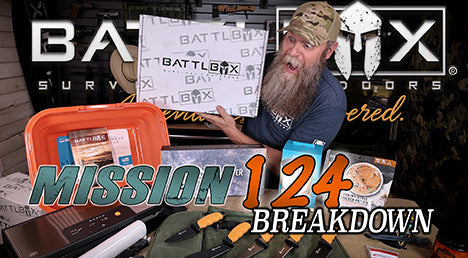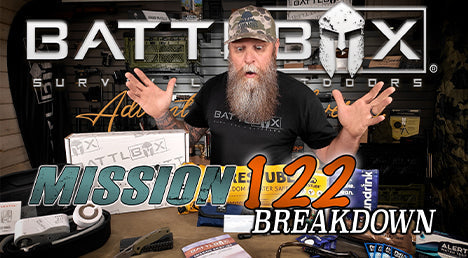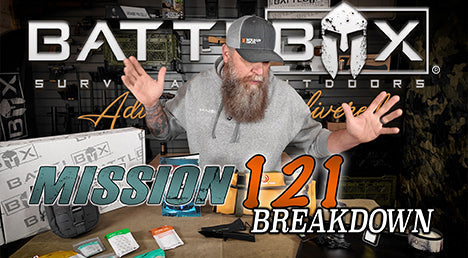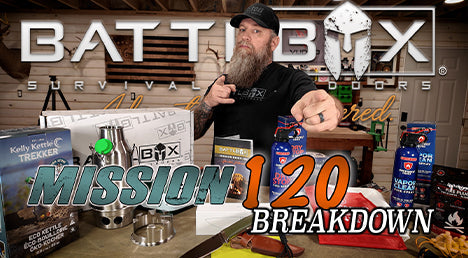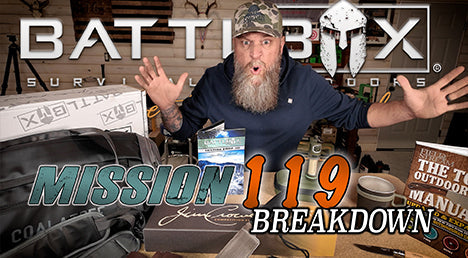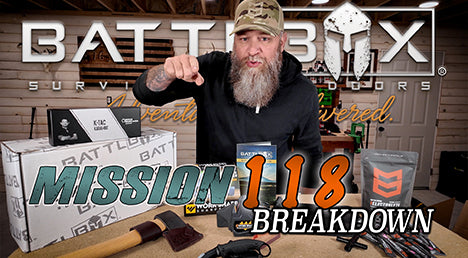Battlbox
How to Sharpen a Bushcraft Knife: A Comprehensive Guide
Table of Contents
- Introduction
- Understanding Your Bushcraft Knife
- Tools for Sharpening
- The Sharpening Process
- Maintaining Your Knife
- Battlbox Products for Knife Sharpening
- Conclusion
- FAQs
Introduction
Imagine standing in the heart of the wilderness, surrounded by towering trees and the sounds of nature. You're ready to carve out your next adventure, but there’s one catch – your bushcraft knife is dull. A blunt knife can turn a promising outdoor experience into a frustrating struggle, making simple tasks like preparing food or crafting tools a challenge. Did you know that maintaining the sharpness of your knife can significantly enhance your outdoor skills and safety?
In this blog post, we will dive deep into the art of sharpening a bushcraft knife, an essential skill for any outdoor enthusiast or survivalist. Whether you’re an experienced woodsman or just starting your bushcraft journey, understanding how to sharpen your knife effectively can make a world of difference. We will cover the tools needed, different sharpening techniques, and maintenance tips to ensure your knife remains in top condition.
By the end of this article, you will have a thorough understanding of how to sharpen a bushcraft knife, allowing you to tackle any outdoor task with confidence. Our discussion will encompass various sharpening methods, the importance of angle and pressure, and how to test for sharpness. Additionally, we will touch on how to select the right gear, including the best products available through Battlbox, to help you on your adventure.
So, let’s get started and sharpen your skills!
Understanding Your Bushcraft Knife
Before we delve into the sharpening techniques, it’s essential to understand what a bushcraft knife is and why it’s a crucial tool for outdoor activities. A bushcraft knife is a versatile cutting tool designed for various tasks in the wild, including carving, food preparation, and even self-defense.
Key Characteristics of a Bushcraft Knife
- Blade Design: Most bushcraft knives feature a full-tang design, which means the blade extends through the handle, providing better strength and balance.
- Blade Material: Common materials include high-carbon steel and stainless steel, each offering unique benefits regarding durability and corrosion resistance.
- Edge Geometry: Bushcraft knives typically have a Scandi grind or flat grind, which provides a strong and sharp edge suitable for slicing and carving.
Understanding these characteristics can help you appreciate what makes a bushcraft knife effective and how to maintain it.
Tools for Sharpening
To sharpen your bushcraft knife, you need the right tools. Here are some essential items for sharpening:
- Whetstone: A whetstone is a flat stone used to sharpen blades. They come in various grits, with lower numbers (like 200-600) for coarse sharpening and higher numbers (like 1000-8000) for fine honing.
- Oil or Water: Depending on the type of whetstone, you may need oil (for oil stones) or water (for water stones) to keep the surface lubricated and prevent clogging.
- Strop: A leather strop is used for polishing the blade after sharpening, helping to achieve a razor-sharp edge.
- Angle Guide: While not strictly necessary, an angle guide can help you maintain the correct sharpening angle, especially for beginners.
Battlbox offers a variety of sharpening tools and accessories in our shop, perfect for enhancing your bushcraft knife maintenance routine.
The Sharpening Process
Step 1: Set Up Your Workspace
Choose a flat surface that can handle the wear and tear of sharpening. If you're outdoors, a sturdy chopping block works well. Make sure you have enough light to see the edge of your knife clearly.
Step 2: Determine the Bevel Angle
The bevel is the angle at which the blade tapers down to the edge. Most bushcraft knives have a bevel angle of about 20 degrees. To achieve this, place the knife flat against the stone and tilt it until the bevel is flush with the surface. This angle is crucial for effective sharpening.
Step 3: Sharpening Technique
-
Coarse Grind: Begin with the coarse side of your whetstone. Apply a few drops of oil or water, depending on the type of stone you’re using.
-
Sharpen One Side: Position the knife at the determined bevel angle. Starting from the heel of the blade, push the knife forward along the stone, applying light pressure. Move the entire length of the blade to ensure even sharpening.
-
Switch Sides: After making several strokes on one side (typically 8-10), flip the knife and repeat the process on the opposite side.
-
Create a Burr: As you sharpen, you should feel a slight burr forming along the edge. This is an indicator that the blade is becoming sharp.
-
Fine Grind: Once you have established a burr on both sides, switch to the finer side of the whetstone and repeat the process. This will refine the edge and remove any roughness.
Step 4: Stropping
After sharpening, it’s time to polish the edge. Use a leather strop to remove any remaining burr and smooth the edge. Hold the knife at a slightly higher angle than the bevel and draw the blade backward across the leather. Repeat this process for about 50 strokes on each side.
Step 5: Testing for Sharpness
To check if your knife is sharp, carefully run your thumb across the edge without applying pressure. A sharp blade will catch on the ridges of your thumbprint. You can also perform a paper test by slicing through a sheet of paper. A sharp knife should cut effortlessly through the paper.
Maintaining Your Knife
Proper maintenance is key to keeping your bushcraft knife in excellent condition. Here are some tips:
- Regular Sharpening: Sharpen your knife regularly, especially after heavy use. A well-maintained blade is easier to sharpen and performs better.
- Clean Your Knife: After each use, clean the blade to prevent rust and damage. Use mild soap and water, then dry thoroughly.
- Store Properly: Keep your knife in a protective sheath or case when not in use to avoid dulling the blade.
Battlbox Products for Knife Sharpening
At Battlbox, we offer a wide range of products designed to help you maintain your bushcraft gear effectively. Our Camping Collection features high-quality whetstones, stropping kits, and other essential tools to keep your knife ready for any adventure. You can also explore our Subscription Services to receive hand-picked outdoor gear delivered monthly, ensuring you always have the tools you need at your fingertips.
Battlbox Subscription Services
-
Basic Subscription: Get started with essential gear for your outdoor adventures. Explore Basic Subscription.
-
Pro Plus Subscription: For the serious outdoorsman, the Pro Plus subscription offers premium products to elevate your bushcraft skills. Learn More about Pro Plus.
Conclusion
Mastering the skill of sharpening your bushcraft knife is essential for any outdoor enthusiast. With the right tools and techniques, you can ensure your knife remains a reliable companion on all your adventures. Remember, a sharp knife enhances your efficiency in the wild, allowing you to focus on enjoying the experience rather than struggling with dull equipment.
By following the steps outlined in this guide, you can maintain your knife's edge and take your bushcraft skills to new heights. Whether you’re preparing for a camping trip, engaging in survival training, or simply enjoying the great outdoors, having a sharp bushcraft knife will empower you to tackle any challenge that comes your way.
Join the Battlbox community today and discover more about our products and subscriptions to equip yourself for every outdoor experience!
FAQs
How often should I sharpen my bushcraft knife?
You should sharpen your bushcraft knife as often as necessary, depending on usage. Regular checks will help you maintain a sharp edge.
Can I use water instead of oil on my whetstone?
Yes, you can use water on water stones. However, if you're using an oil stone, it’s essential to use oil for lubrication.
What is the best angle to sharpen my bushcraft knife?
Most bushcraft knives are sharpened at a 20-degree angle. Maintaining this angle ensures an effective edge for various tasks.
How do I know when my knife is sharp enough?
A sharp knife should easily slice through paper and feel sharp against your thumb when lightly dragged across the edge.
Where can I find sharpening tools?
You can find a variety of sharpening tools and accessories at the Battlbox Shop to help you maintain your bushcraft knife.
Share on:






